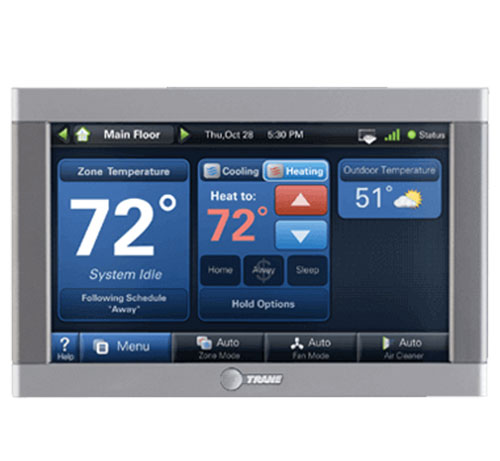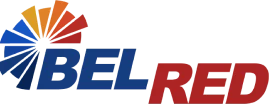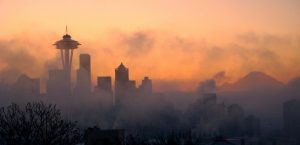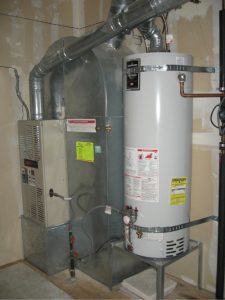There’s no bigger buzzkill than firing up your furnace on a frigid winter day only to be met with an icy blast of air rather than toasty warmth. You might find yourself questioning everything – did I accidentally set it to AC mode? Is this some sort of malfunction? Before you spiral into a panic over potential heating system headaches, take a deep breath. Cold air from your furnace doesn’t automatically equal disaster.
Several relatively straightforward issues could potentially be the culprit behind that unwanted chill factor. From thermostat snafus to airflow restrictions to the realistic life expectancy of the equipment itself, there are a number of probable explanations to check off the list. Let’s walk through some of the most common reasons why furnaces start blowing cold air instead of that hot furnace blast you’re expecting.

Thermostat Settings
You’d be surprised how often improper or accidental thermostat settings are the sneaky culprit behind cold air coming from furnace vents. These temperature control devices seem simple enough, but a few missed buttons or programming oversights can easily prevent your heating system from firing up properly.
First things first – double-check that your thermostat is set to “Heat” mode and not “Cool” or any fan-only settings. Maybe you switched modes last spring and forgot to adjust it back when cold weather arrived. Or perhaps a well-meaning houseguest or curious child inadvertently toggled a setting without your knowledge.
Next, ensure the target temperature is set above the actual ambient temperature reading. If you have the thermostat set to 68°F but it’s only 65°F in the home, that temperature differential isn’t enough to prompt heat production from the furnace. Bump the desired setting up at least a few degrees to kick that furnace into gear.
You’ll also want to check any programmed temperature schedules that could be inadvertently overriding your heating preferences. Accidentally leaving the thermostat in an energy-saving setback mode would prevent that furnace from reaching your comfort levels until the next scheduled increase.
If you have a smart or Wi-Fi thermostat, ensure it hasn’t switched to any energy-saving eco modes without your knowledge based on networked programming. Or maybe there was simply a connectivity glitch that needs a quick reboot to restore normal operation.
Bottom line – thoroughly investigating all thermostat settings, programming schedules, and operating modes should be job one when that furnace just isn’t bringing the heat. Such an easy fix could be the culprit!
Pilot Light Issues
For gas furnaces specifically, a failure or fault with the pilot light could be why you’re feeling cold air instead of comfortable heat. That little burning flame plays a crucial role in actually igniting the furnace’s gas burners to produce warmth. If the pilot goes out unexpectedly, you’re left with cool air circulation at best.
Start by checking if your furnace’s pilot light is still lit and burning with a steady blue flame. If it’s completely extinguished, the ignition sequence won’t happen – leaving you in the cold. Luckily, relighting a pilot is usually pretty straightforward for homeowners comfortable with operating gas appliances.
Just be sure you know the specific relight procedure for your model, as there are often important steps like depressing the gas reset valve or toggling power switches beforehand. Attempting to relight it improperly could allow gas buildup into unsafe levels.
It’s also possible the pilot itself didn’t fully extinguish but has an issue allowing it to burn inconsistently or produce only a feeble, unstable flame. Things like a clogged nozzle, thermocouple malfunction, or even drafty conditions could prevent that vital pilot from staying lit reliably.
In situations where the pilot seems problematic, drafty, difficult to relight, or just won’t remain ignited – it’s time to call in a professional service technician for a closer diagnosis. They can properly inspect critical components like the thermocouple sensor, gas valve operation, and supply pressure to identify any pilot issues.
Furnace Overheating
While it might seem counterintuitive, an overheating furnace can actually start circulating cold air as a safety mechanism. These systems are designed with fail-safes to prevent dangerous overheating conditions that could potentially become fire risks.
If your furnace’s air handlers, combustion chambers, or heat exchanger components start getting excessively hot, it will automatically shut off the gas burners or heating elements. This enables the blower fan to keep running and circulating air, but without any actual heat being produced in the process.
So what causes a furnace to overheat in the first place? Airflow obstructions or blower motor issues are often the culprits. Restrictions like dirt-clogged filters can block proper air circulation, causing heat to become trapped rather than being efficiently expelled. A malfunctioning blower only compounds the problem.
Another potential overheating trigger? A cracked or deteriorating heat exchanger itself. This critical component is responsible for transferring furnace combustion heat into the airstream. Any breaches in the heat exchanger could cause dangerous backflow situations.
While that automatic overheating shutoff safeguards your home from furnace fires or carbon monoxide hazards, it also leaves you with cold air blowing from the vents. Essentially, it’s the “lesser of two evils” to prevent a far worse outcome.
If you suspect overheating is behind the cold air issue, don’t try to override any safety switches or controls yourself. That’s an extremely risky proposition! Call an HVAC professional who can safely inspect the entire system for airflow blockages, heat exchanger integrity, blower performance, and more.
Ductwork Problems
You know all that heating power generated by your furnace’s combustion chambers and elements? It ultimately has to travel through the duct system to distribute heated air throughout your home’s living spaces. Any significant leaks, blockages, or disconnections in that ductwork could be why you’re not feeling that warmth.
Let’s start with leaky duct joints or cracks in the duct materials themselves. These allow significant portions of heated airflow to escape into undesirable areas like attics, crawlspaces, or in-between walls before making it to vents. This loss of hot airflow often gets replaced with cooler ambient air from the surroundings being pulled in through the ductwork.
Then you have navigating sizable obstructions that restrict flow, whether from excessive buildup inside ducts or even disconnections/crushing that prevent proper circulation. Your furnace can crank out heat all day long, but it won’t make it through major blockages.
Even smaller, more intermittent leaks stemming from subpar duct sealing can severely compromise that critical heat delivery system over time. All those minor air losses along the way add up to noticeable cool spots and temperature imbalances in different rooms of your home.
The good news? Many ductwork faults are relatively straightforward to visually inspect for an HVAC technician. If they find disconnections, crushed lines, or excessive leaks – those sections are easily sealed or repaired with proper equipment and materials. For major blockages or collapses, ductwork segments may need replacement.
Don’t underestimate the critical role your air distribution system plays in furnace operation. Ductwork issues definitely deserve a closer look if you’re feeling cold air instead of toasty warmth.
Dirty or Clogged Filters
Let’s circle back to one of the most common culprits behind heating system inefficiencies and furnaces blowing cold air – excessively dirty or clogged air filters. These unassuming fiber screens play a hugely important role in your HVAC system’s performance.
As air circulates through your furnace and duct system, those filters capture particulate contaminants like dust, pollen, dander, and more to improve indoor air quality. But when filters become overloaded with buildup, they start restricting airflow more and more.
With proper airflow obstructed, your furnace’s heat exchanger can actually overheat and trip safety switches that shut down burners to prevent hazards. You’re then just left with the ambient temperature air circulating – no actual heat production.
Even if overheating doesn’t occur, restricted filters make the entire blower system work much harder to distribute air. This not only wastes energy and causes inconsistent heating, but puts excessive strain on furnace components that lead to premature breakdowns over time.
The fix? Routinely replacing those furnace filters based on manufacturer recommendations, usually every 1-3 months depending on home occupancy and HVAC usage. This easy maintenance step removes blockages and optimizes airflow again.
For ongoing issues with frequent filter clogs, you may need to upgrade to higher-efficiency HEPA filters or install dedicated air cleaners. Neglecting filter changes is just asking for furnace underperformance and accelerated deterioration of expensive components.
Faulty Ignition System
Modern furnaces rely on electrical ignition systems to initiate and maintain their gas burners or heating elements. Any malfunctions with these ignition components could prevent proper heating sequences from ever occurring – leaving you with just cool air circulation instead.
On a gas furnace, the ignition system is responsible for initially sparking and lighting a small stream of gas that then sustains the main burners during normal operation. Cracks or corrosion on igniter rods, malfunctioning control boards, or faults with gas valve controls could easily disrupt this process.
For electric furnaces using heating elements, any disruption in the high-voltage igniter circuits means those heating coils won’t power up to produce that toasty warm air you’re craving. A bad igniter, frayed wiring, control board failure, or electrical grounding issues often prove to be the root cause.
While ignition issues may seem straightforward, they’re not something homeowners should tinker with given the electrical and natural gas hazard risks involved. Anytime you suspect ignition system problems are behind your furnace’s cold air woes, it’s best to promptly call an HVAC professional for diagnosis and repair.
Experienced techs can safely test, troubleshoot, and calibrate all the various ignition components from gas valves and pilot assemblies to hot surface igniters and control boards. With their expertise, you can restore reliable heat production in a safe, effective manner.
Fuel Supply Problems
For gas furnaces, one of the most fundamental requirements for generating that wonderful warmth is a proper, uninterrupted fuel supply. If the furnace can’t draw an adequate amount of natural gas or propane, you’ll inevitably experience cooling issues and cold air from vents.
Start by checking to ensure the gas line itself is open and unobstructed all the way from your home’s meter or tank supply to the furnace connection. Shutoff valves may have been accidentally turned off or become stuck in the closed position. Clear any visible pipe kinks or debris blockages too.
Even with the main gas line open, you could still have insufficient fuel flow if the supply pressure is too low. Ideally, your furnace should receive its specified inlet pressure range to operate burners at full-rated capacity. Anything lower means reduced BTU output and heating ability.
Pressure shortfalls are commonly caused by undersized gas piping that can’t provide adequate volume, especially for high-demand appliances like furnaces. Leaks along supply lines can also contribute to pressure drops at the appliance level. Having a technician inspect and test gas pressures at your furnace’s inlet is recommended.
For propane furnaces, aside from potential leaks or line obstructions, you’ll also want to monitor tank levels. If supplies get too low, the reduced vapor pressure may not satisfy your furnace’s fuel needs for optimal combustion and heat production.
Any of these fuel supply shortcomings can force furnaces to rapidly cycle between on/off stages, only blowing cold air during those off periods. Ultimately, inadequate fuel is a guaranteed recipe for heating performance issues!
Age and General Wear of the Furnace
While certainly not the most exciting possibility, the cold hard truth is that no furnace lasts forever. Just like any other major home appliance or mechanized system, heating systems will inevitably start to break down and lose efficiency over an extended period of time.
Think of the sheer number of critical components that enable heated air production – gas valves, burners, heat exchangers, blowers, ignition systems, circuit boards, and more. With every completed heating season, a little more wear accumulates on each part.
Even with proper routine maintenance, your average furnace simply wasn’t designed to operate at peak conditions for multiple decades. At a certain point, enough minor faults and deteriorations build up to negatively impact the system’s ability to generate and distribute heat effectively.
When that impactful wear and tear sets in after 15-20 years (or more), you’ll start experiencing subpar heating no matter how you troubleshoot components. Inexplicably cold air from vents is one of the first obvious signs that replacement may be in order.
While unexpected breakdowns happen, most reputable HVAC technicians can provide solid estimates on your furnace’s remaining lifespan based on its current condition. If yours is clearly on its last legs age-wise, it may make more financial sense to plan for an upgrade rather than sinking money into more and more repair band-aids.
Sometimes Father Time inevitably catches up to even the most well-maintained heating systems. As unexciting as it sounds, the furnace’s advanced age could very well be the reason you’re not feeling that cozy warmth this winter.
Don’t Get Left Out in the Cold – Solve the Mystery of Chilly Air Blasts
There are few things more frustrating than when you go to crank up that thermostat on a blustery winter day, only to get an unwelcome blast of cold air from the vents instead of soothing warmth. Before you start sweating over visions of an expensive HVAC overhaul, take a deep breath. More often than not, that chilly air could just be the result of a relatively simple issue or easy fix.
Whether it’s a thermostat setting gone haywire, a clogged air filter restricting flow, or even just an ignition system hiccup, many furnace cold air problems have straightforward explanations that experienced techs can quickly identify and resolve. Of course, there are situations where the underlying cause may be a bit more complex – faulty ductwork, fuel supply interruptions, or potentially an aging system ready to call it quits.
But before you slide into panic mode, it’s always wise to have a professional set of eyes diagnose the why behind that cold air first. With some expert troubleshooting, you may just need a minor repair or basic maintenance to get your furnace cranking out that cozy heat again in no time.
That’s where the team at BelRed comes in. For over 35 years, we’ve been the region’s go-to home heating experts – solving cold air mysteries and restoring reliable warmth to families across the Pacific Northwest. Our certified furnace technicians understand every potential cause for cold airflow and have the training to safely troubleshoot even the trickiest scenarios.
From thermostat calibrations and ductwork inspections to fuel line testing and electrical system diagnostics, BelRed techs have the thoroughness to pinpoint issues other companies might miss. And you can always count on upfront, honest assessments about whether repair or full system replacement is the smarter investment.
Don’t resign yourself to shivering through another day of cold air blasts with crossed fingers. Place your trust in the BelRed furnace authorities by calling (855) 345-6161 today! With our skilled team on the case, you’ll have that soothing warmth flowing again faster than you think.







